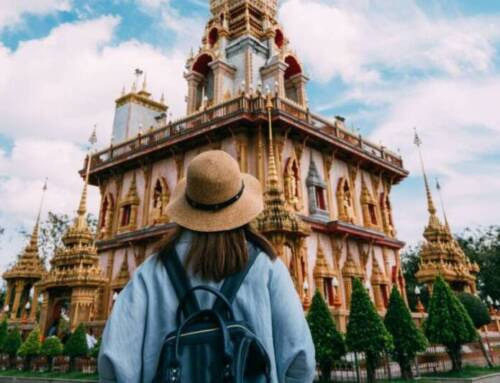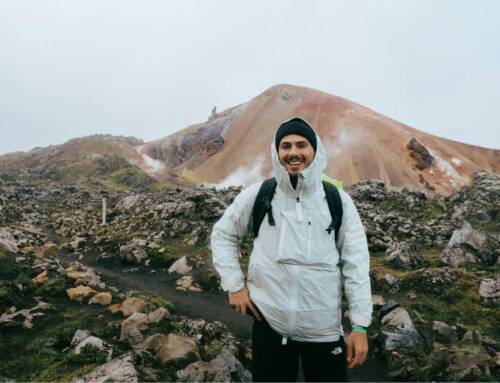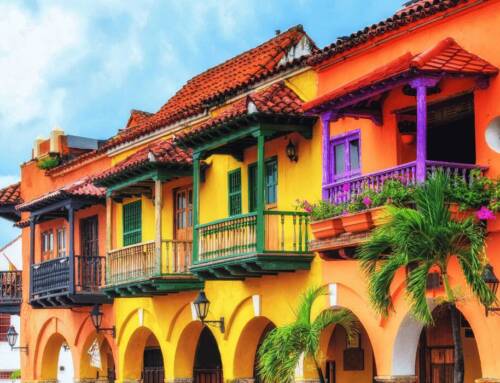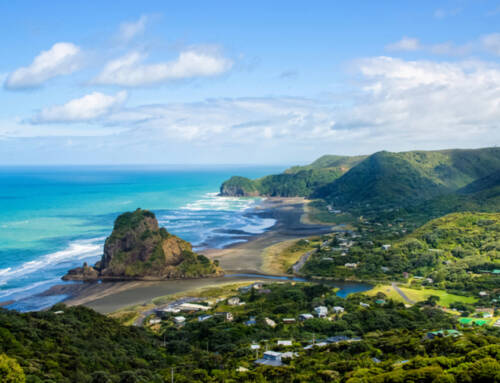Nestled between Java and Lombok, Bali stretches only about 140 kilometers east to west and 90 kilometers north to south. It’s shaped by dormant volcanoes, endless rice paddies, dense jungles, and rolling waves.
Throughout rice fields, hidden caves, and cliff-top sites, Bali’s Hindu temples, known locally as pura, are everywhere, reflecting the daily life of the Balinese people and their strong connection to the divine. Balinese Hinduism blends this religion’s beliefs with ancestral worship and reverence for Buddhist saints, immersing visitors in landscapes filled with mysticism and stunning beauty. This magical atmosphere sets Bali apart from the more than 17,000 other islands of Indonesia.
From swinging over rice fields, relaxing in infinity pools, and diving under waterfalls to witnessing Balinese rituals, surfing perfect waves, or diving among manta rays and turtles—Bali has countless activities to make you fall in love with the “Island of the Gods.” Discover even more adventures in this complete guide to Bali.
If you’re planning to experience the magic of Bali, having travel insurance that provides peace of mind is essential. Whether you’re diving, surfing, or exploring temples and jungles, having coverage for unexpected events lets you enjoy your trip to the fullest, worry-free.
Index
- Must-see places in Bali
- What to see in central Bali?
- Ubud, the heart of Bali
- Monkey Forest, a sacred nature reserve
- Ubud Royal Palace, Ubud’s cultural treasure
- Pura Saman Saraswati, a spiritual haven in Ubud
- Tegalalang rice terraces, Ubud’s photogenic rice fields
- Jatiluwih rice terraces, Bali’s landscape at its best
- Pura Ulun Danu Bratan
- Pura Tirta Empul, the temple of purifying springs
- Pura Gunung Kawi, the temple of Kings
- Pura Goa Gajah, the elephant cave
- Penglipuran, a traditional Balinese village
- What to see in northern Bali?
- What to see in eastern Bali?
- What to see in southern Bali?
- Complete guide to Bali: What are the best beaches?
- What are the best islands to visit from Bali?
- Complete guide to Bali: What is most famous?
- What is the best month to visit Bali?
- Is Bali a safe place?
- How much money do you need for a trip to Bali?
- Tips for organizing a trip to Bali
Must-see places in Bali
Bali is a tropical paradise offering diverse experiences to suit every type of traveler. The southern coast, home to the famous Tanah Lot and Uluwatu temples perched on rocky outcrops, is the most popular area. Here, you’ll find the most visited beaches, like Seminyak, Kuta, Canggu, and Padang Padang—the latter being a favorite among surfers.
In the heart of the island lies Ubud, Bali’s spiritual center and the best place to experience Balinese culture while surrounded by lush nature. This charming town is encircled by volcanoes and rice fields, including the renowned Tegallalang and Jatiluwih terraces. These fields are iconic symbols of the Balinese connection to nature, and their intricate traditional irrigation system, called subak, has earned them UNESCO World Heritage status. Beyond providing rice—a staple food—these terraces hold deep spiritual significance.
The northern part of the island is less known, so fewer tourists venture there due to its distance from the south (at least until the planned airport is constructed). Along the northern coast, you can enjoy authentic experiences in places like Lovina, Singaraja, and Pemuteran, with their unique black-sand beaches. Here, you can witness daily life as fishermen set out to sea or local women make ritual offerings. The region is dotted with waterfalls and natural hot springs—perfect for refreshing swims in freshwater pools.
The eastern part of Bali retains its traditional essence in spots like Mount Agung, the island’s tallest volcano, and Amed, where volcanic sand beaches are ideal for diving. A highlight is the USS Liberty shipwreck off the coast of Tulamben, offering an unforgettable dive.
These are the top places you need to visit if you’re traveling to Bali:
What to see in central Bali?
Ubud, the heart of Bali
Since Elizabeth Gilbert’s memoir Eat, Pray, Love and its film adaptation starring Julia Roberts introduced this wonderful part of Bali to the world, many tourists have chosen Ubud as a base for exploring the rest of the island or even staying for an extended period. I myself have spent two months living in Ubud, immersing in its magical atmosphere. The true essence of Bali can be felt in this small town located in the heart of the island, where you can experience its culture and traditions intensely.
Restaurants, cafes, and shops selling gifts and crafts line its two main streets, which run parallel to each other. For the best souvenirs, though, head to the Ubud Market, located opposite the Royal Palace, where you’ll find silk garments, wooden figurines, sarongs, and many other items you can pick up at reasonable prices after some bargaining.
Ubud is a great starting point for exploring northern and eastern Bali on day trips or longer excursions. For this, the best option is to hire a car with a driver, who also acts as a guide, taking you to various attractions spread across different routes in Bali.
But you don’t need to go far to lose yourself in Bali’s landscapes. Ubud is surrounded by rainforests and vast rice fields, which can be explored through easy, scenic trails. Simple hikes lead you to the heart of Bali’s beauty. The most famous trail is Campuhan Ridge Walk, which stretches two kilometers through Ubud’s nature, passing lush greenery and a surprising temple. Sweet Orange Walk Trail is another hidden path that starts north of Ubud and winds through dense vegetation. I also recommend visiting the steps of Penestanan, a charming spot with a unique atmosphere.
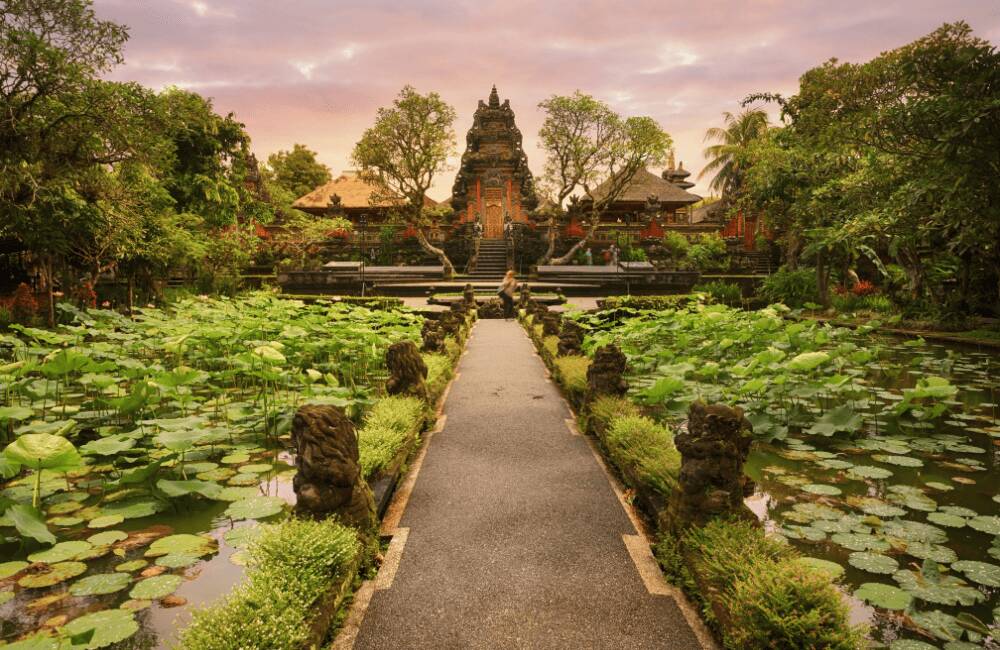
Other must-see spots in Ubud:
Monkey Forest, a sacred nature reserve
A temple complex surrounded by the tropical forest that dominates Ubud is home to countless playful Balinese long-tailed macaques. It’s located between Ubud’s two main streets: Jalan Monkey Forest and Jalan Hanoman. Strolling through the grounds—home to temples like Pura Dalem Agung, Pura Prajapati, and Pura Beji—you’ll be surrounded by over 100 species of trees.
The mischievous monkeys aren’t afraid of tourists and often approach looking for food. Be careful not to carry any food or valuables that they might snatch.
Ubud Royal Palace, Ubud’s cultural treasure
Known as Puri Saren Agung, this palace is a fine example of Bali’s rich cultural and architectural heritage. Rebuilt after the 1917 earthquake, it has housed several Ubud kings and is a central hub for the island’s artistic and cultural traditions.
Nearby, you’ll also find the Saman Saraswati Temple, a complex with ponds filled with lotus flowers. Both places offer the chance to witness traditional Legong and Kecak dances, accompanied by percussion instruments. Buy your ticket in advance so you don’t miss this unique Bali experience.
Pura Saman Saraswati, a spiritual haven in Ubud
Just steps from the Royal Palace, this temple is another must-see in Ubud. Entrance is free, and the most striking feature is the lotus-filled pond extending to the entrance, where there’s a lovely café offering a tempting spot to rest during your day of sightseeing. The temple is dedicated to Saraswati, the goddess of knowledge, music, and art.
Tegalalang rice terraces, Ubud’s photogenic rice fields
Near Ubud, next to the village of Pejeng, you’ll find one of Bali’s must-see rice terraces. The fields cascade down the side of the valley, creating one of the island’s most iconic scenes, with green expanses stretching as far as the eye can see, contrasting beautifully with the blue sky.

The land’s topography makes farming here challenging, which is why they use this distinctive cascading arrangement. The terraces are fed by an intricate traditional irrigation system called subak, where water from springs flows through channels and is distributed across the fields.
Around the rice terraces, you’ll find various viewpoints with restaurants offering some of Bali’s best panoramic views. For a thrilling experience, you can swing out over the rice terraces, capturing unique photos for social media.
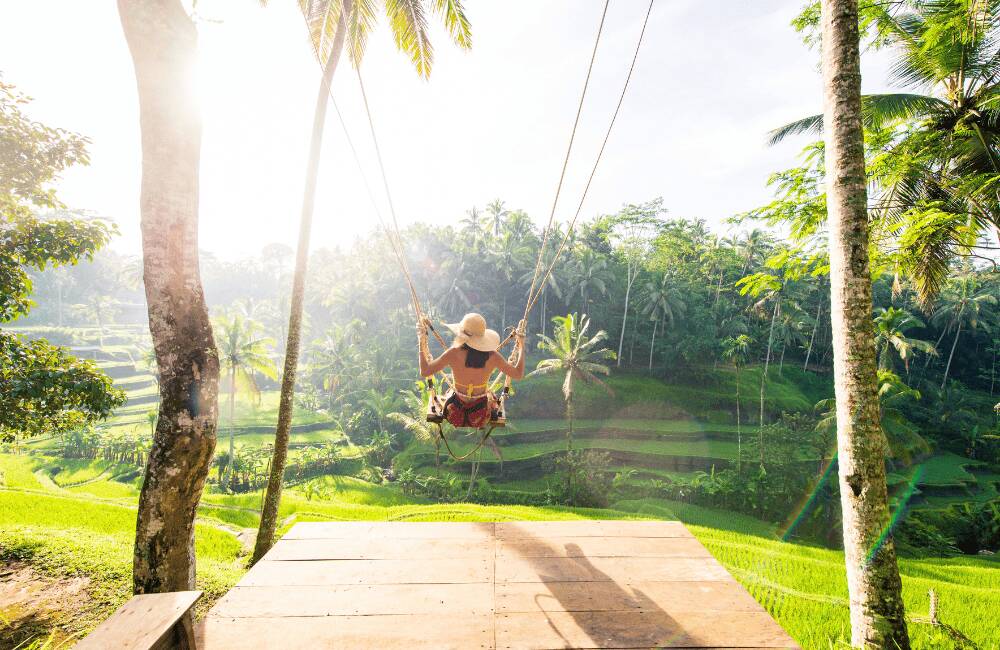
Jatiluwih rice terraces, Bali’s landscape at its best
Further north, you’ll find what are probably Bali’s most impressive rice terraces. Declared a UNESCO World Heritage Site in 2012, these plantations resemble massive steps, located in Tabanan, one of Bali’s nine regencies.
“Truly beautiful” is the translation of their name—and rightly so! Walking along trails between these emerald-green hillsides is a dream come true. The longest trail is about seven kilometers, while the shortest is 1.4 kilometers.
The rainy season, from February to April, is a great time to see them in full bloom.
Pura Ulun Danu Bratan
Continuing north, but well before reaching the coast, you’ll find Pura Ulun Danu Bratan, one of Bali’s must-visit sites. Dedicated to Dewi Danu, the goddess of water, this beautiful temple appears to float on Lake Bratan, whose waters reflect its image, framed by mountains. It’s a striking sight that you can also admire from a boat on the lake.
The temple complex includes several shrines and five temples, each dedicated to a different deity, reflecting the Balinese people’s close relationship with nature, especially water.
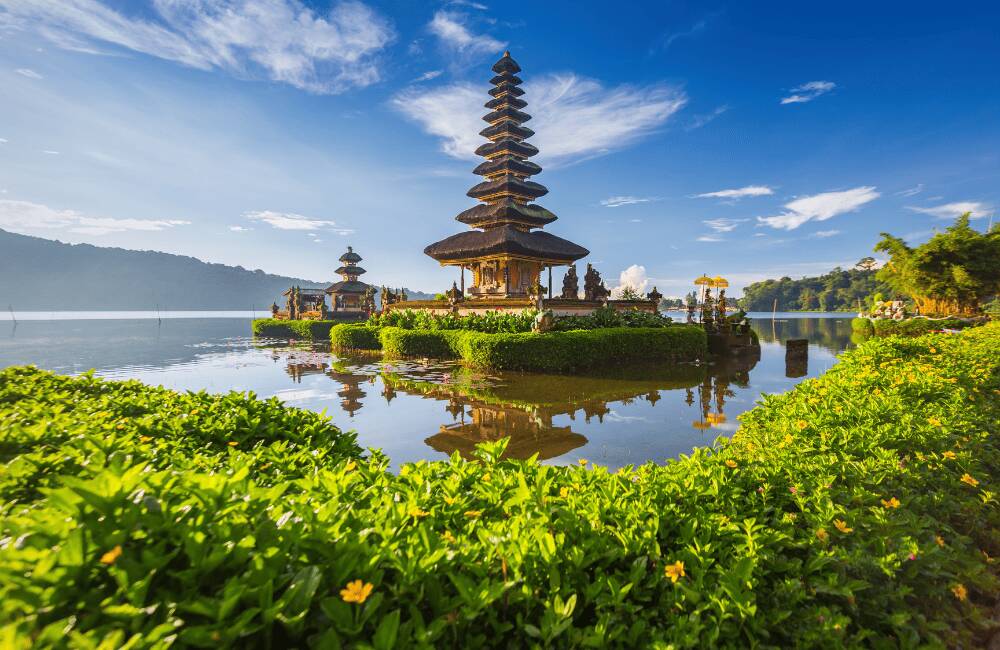
Pura Tirta Empul, the temple of purifying springs
Just over 20 minutes from Ubud in the village of Tampaksiring, Pura Tirta Empul is one of the temples where you can experience Balinese faith most vividly. Built in the 10th century with references to local mythology, it’s fed by springs that have flowed for over a thousand years. Considered sacred, purifying, and healing, devotees and visitors alike eagerly bathe in its waters.
In addition to these well-known temples, there are many others in central Bali, less frequently visited but well worth exploring:
Pura Gunung Kawi, the temple of Kings
Carved into a cliff wall along the Pakerisan River, Gunung Kawi was built in the 11th century and dedicated to the water god. To reach it, you’ll need to descend steep steps lined with souvenir stalls.
On one of the outer walls, you’ll find the tombs of the royal family members from the Udayana dynasty, though it’s believed their bodies are actually buried in the temple’s caves.
Gunung Kawi is surrounded by rice fields and located very close to Pura Tirta Empul, making it a good idea to visit them together.
Pura Goa Gajah, the elephant cave
A giant open mouth, carved into rock, welcomes you to Goa Gajah, a cave in the Bedulu region southeast of Ubud, transformed into a temple in the 11th century. Known as the Elephant Cave, it’s dedicated to Ganesha, the Hindu god with a human body and an elephant head, and inside, you’ll find statues of the deity, weathered over time.
Like Pura Tirta Empul, it has pools where Balinese people perform purification rituals, and throughout history, it has been a pilgrimage site for both Buddhists and Hindus.
Reaching Pura Goa Gajah from Ubud is very easy, as it’s just a ten-minute drive from the city center.
Penglipuran, a traditional Balinese village
Located 26 minutes by car from Tirta Empul temple, at 700 meters above sea level and surrounded by a lush bamboo forest, this village feels frozen in time, despite having become one of Bali’s popular tourist spots. Here, you can experience a day in the daily life of Balinese people.
What to see in northern Bali?
Brahmavihara Arama Temple, a symbol of Peace
Although Balinese Hinduism is the main religion of the island, various religions coexist here in perfect harmony. An example of this is this Buddhist monastery, the largest in Bali. Different pavilions and gardens spread throughout its grounds, which were inaugurated in 1970.
Goa Lawah Temple, the bat temple
This temple took shape in the 11th century at the entrance of a cave inhabited by hundreds of bats. It is said that previously it was a very important place for conducting rituals related to the afterlife. Among its legends is one that states it is possible to access three different points in Bali from inside: Mount Agung – where the Mother Temple is located – Talibeng, and Tangkid Bangbang. Does anyone dare to search for the passages among the bats that fly overhead?
Goa Lawah beach and the village of Pesinggahan are nearby, making for a good tourist combination in the area.
Bali waterfalls, freshwater dips
Mixing visits to temples with dips in waterfalls is a fun proposal for any trip to Bali. Surrounded by a spectacular jungle landscape, these waterfalls not only refresh on hot days but also provide the perfect backdrop for stunning photographs. Most are sprinkled throughout the north of Ubud and further up, and to access them, you’ll need to drive or ride a motorcycle and pay an entrance fee. Once inside, a short hike through bridges and lush vegetation may be necessary to reach them.
Aling Aling is one of the most popular and beautiful waterfalls to see in Bali alongside Nung Nung. To reach the latter, you’ll need to climb about 500 steps. After the trek, you’ll be amazed by its drop of over 50 meters.
With seven waterfalls, Sekumpul is probably one of the least accessible, requiring a motorcycle ride followed by a 4 to 5-hour hike to get there.
On the other hand, Munduk and Git Git are easily accessible, which is why they are often frequented by locals. Comprised of several waterfalls, it takes about a 15-minute walk from the entrance to reach them.
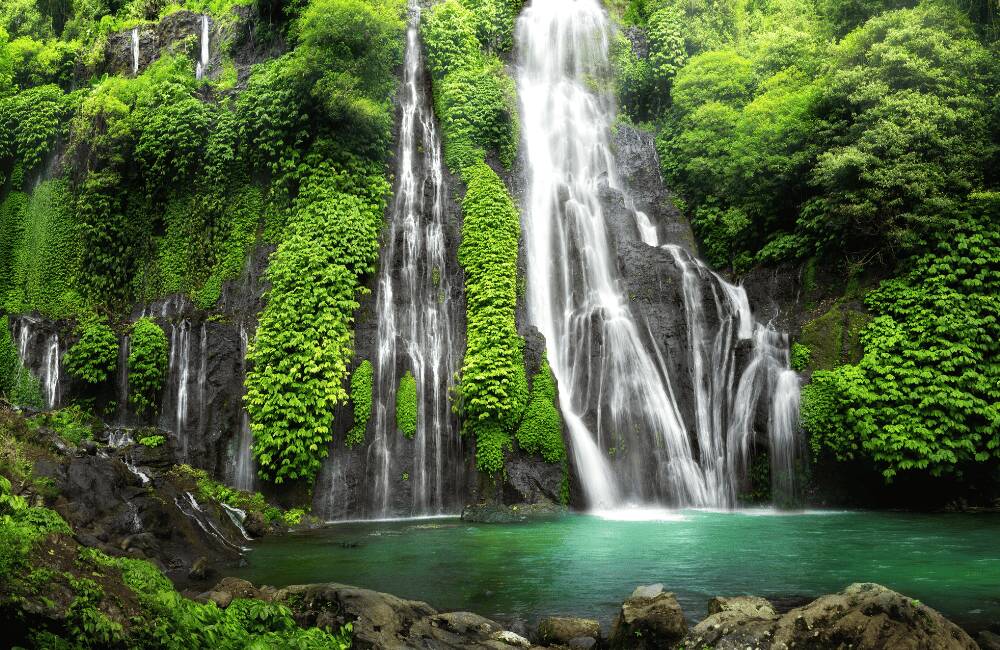
Mount Batur, the best sunrises in Bali
The interior of Bali is crowned by volcanoes, among which Mount Batur stands out, situated in front of the lake of the same name in the northeast of the island. One of the must-do activities for travelers arriving in Bali is to hike to its crater to watch the sunrise at an altitude of 1,717 meters. The excursion takes between two and three hours and begins in the early hours of the morning. Those who prefer a less strenuous option can enjoy the view from one of the viewpoints or restaurants that surround the caldera. One of the most impressive stops is Penelokan, where you can immerse yourself in the beauty of Kintamani, as this volcano is also known.
What to see in eastern Bali?
Pura Besakih, the Mother Temple
At an altitude of one thousand meters, the 22 temples built with volcanic stone that make up Pura Besakih rise on the slopes of Mount Agung. This is the most important temple in Bali. Why? In addition to its spectacular location, it is the largest and most sacred temple on the island, which is why it is known as the “Mother Temple.” Although many of the shrines did not survive the earthquakes of 1917, they did survive the volcanic eruption of 1963, an event that the locals considered miraculous.
Inside, you will find Pura Penataran Agung, with various spaces representing the universe, and Pura Pangubengan, where you can enjoy beautiful views of the entire complex. But what has undoubtedly become popular in this significant Balinese spiritual heart is its photogenic gate. However, to get that coveted photo, you will need to wait in line for about two hours.
Pura Penataran Agung Lempuyang, the gate to heaven of Bali
Located in the east of the island, this temple is part of a group of six others situated on the slopes of Mount Lempuyang, at an altitude of over one thousand meters.
In recent years, it has gained popularity due to its famous sacred gates, dubbed the “Gate to Heaven,” which frame Mount Agung. Long lines form to take a photo in front of them, with the mountain reflected in a mirror—a very Instagrammable trick that enhances its charm.
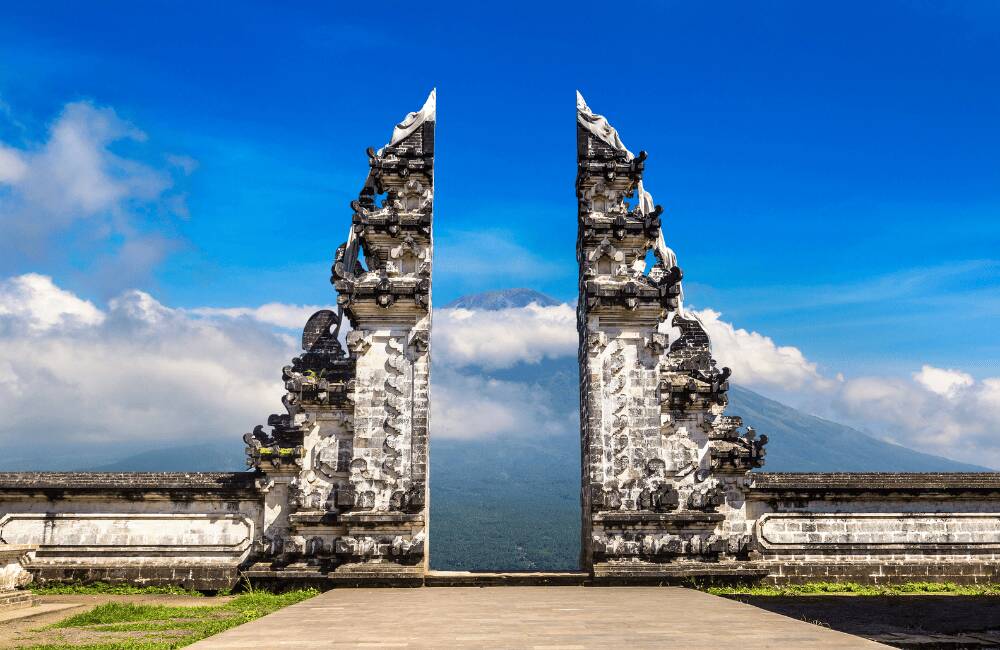
Mount Agung, the Most Sacred Place in Bali
At 3,142 meters high, Gunung Agung is the tallest volcano in Bali. Located in the northeast of the island, it is considered a sacred place of special importance, as it is equated with Mount Meru, the central axis of the universe in Hinduism. Its last eruption occurred in 2017 and kept the entire island on edge, but there was more recent activity in 2019.
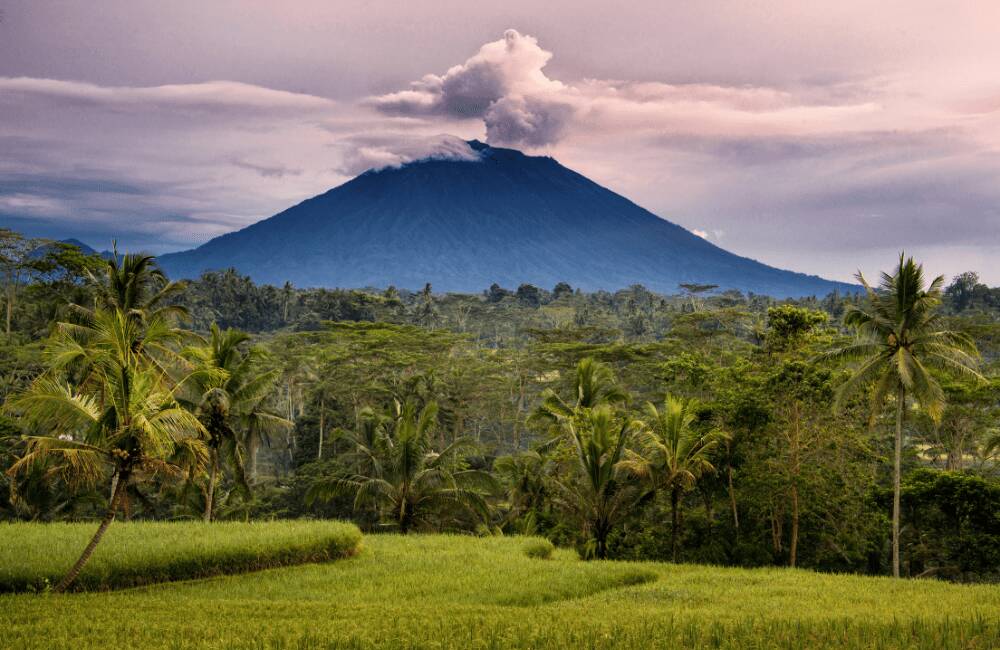
Climbing to its crater requires significant athletic ability and the guidance of an experienced guide.
Other volcanic cones like Buyan or Bratan have turned into lakes.
Tirta Gangga, the Palace of Divine Waters
“Sacred Water of the Ganges” is the translation of this water palace commissioned in 1947 by the last king of Karangasem as a place of purification and spiritual retreat. It had to be rebuilt after suffering from a volcanic eruption in 1963 and an earthquake in 1979.
The complex is famous for its gardens, fountains, and ponds filled with lotus flowers, reflecting the island’s strong connection to water.
What to see in southern Bali?
Pura Tanah Lot, the best Balinese sunsets
Built by a priest in the 16th century as an offering to the sea spirits, Tanah Lot rises on a small island accessible at low tide. When the water makes it impossible to reach, pilgrims use the Batu Bolong and Penyawang shrines, which are also part of the site.
Tanah Lot is one of the temples worth visiting, especially at sunset in Bali when the sun dips behind it, painting the sky in countless oranges while the waves crash against the rocks.
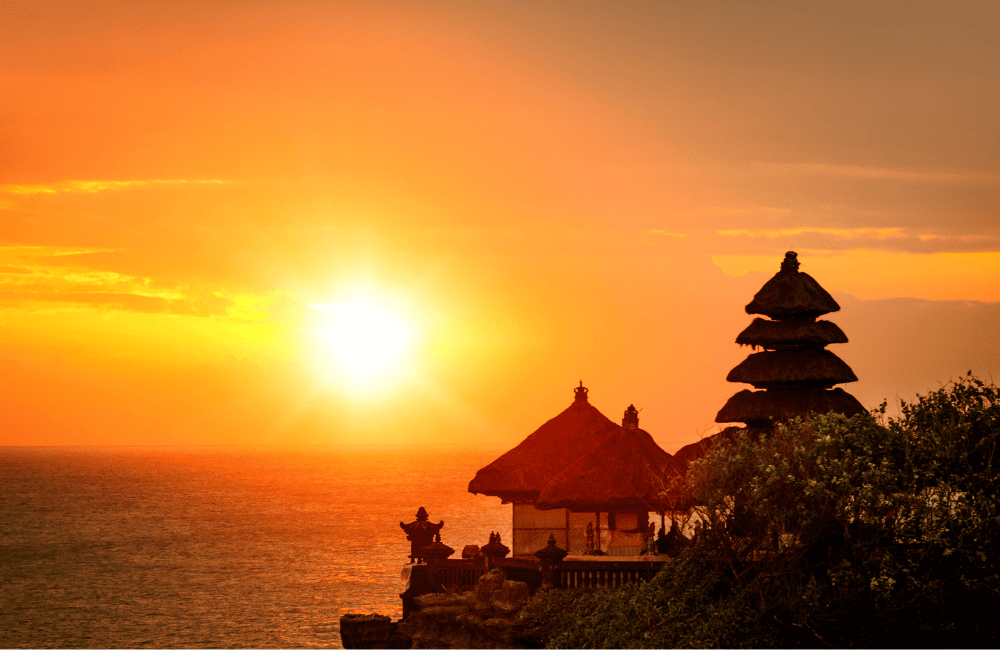
It is said that a curse befalls couples who visit Tanah Lot together. The legend dates back to the love story, or rather the heartbreak, of a prince and a princess from the Brahman caste. They visited the temple from the nearby island of Java and decided to get intimate for the first time at sunset. After this incident, the prince refused to marry the princess and abandoned her. Heartbroken and humiliated, she cast a curse condemning all couples who visit the place without being married to inevitable breakup. So, do you dare to visit it now?
Pura Luhur Uluwatu, the Cliff Temple
Also located in the south of the island, Uluwatu is one of the most special temples worth visiting in Bali. It is perched on a steep 70-meter cliff, with the waves of the Indian Ocean crashing bravely below.
At one of its entrances, several mischievous monkeys are tasked with protecting the temple from bad influences, as well as stealing the belongings of tourists who pass by.
The best time to enjoy Pura Luhur Uluwatu is at night when traditional Kecak dance performances take place.
Complete guide to Bali: What are the best beaches?
In our travel imagination, we have always associated Bali with paradise beaches, but unlike other islands in Indonesia, it is not characterized by its beaches, which often have strong currents. If you want to spend the day swimming in turquoise waters or lounging on golden sands, you should head to the small islands scattered around Bali, the Nusas or the Gilis. However, along the Balinese coast, you will find beaches where you can enjoy the vibrant atmosphere of its little villages. In the north and east, the sands are dark and volcanic, perfect for those looking to escape mass tourism, while in the south, they are more golden and have ideal spots for surfers. Choose the beach, or pantai – its name in Indonesian – that suits you best.
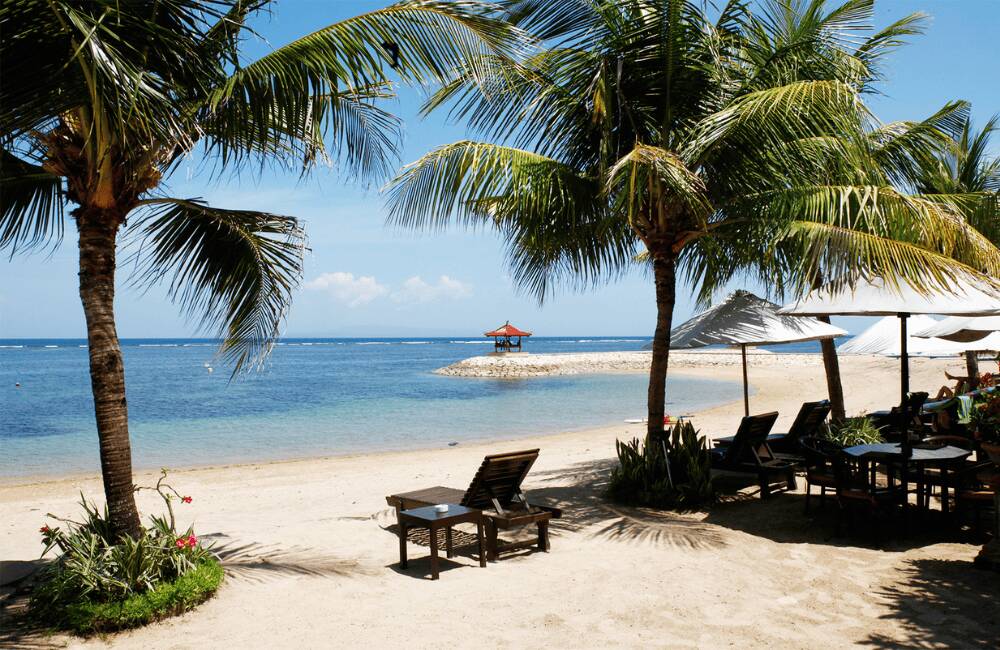
Jimbaran Beach, the Fishermen’s Village
Just south of Denpasar Airport, Jimbaran is known for the numerous seafood restaurants lining its beach. Here, you can savor delicious dishes of fresh fish grilled over coconut shells. In addition to coming here to enjoy the fish and swim in its inviting waters, Jimbaran is a great beach to experience local life.
Kuta Beach, where fun never lacks
Popular among Australians, this area is known for being a party destination, both day and night. One of its main streets is Legian, located next to the three-kilometer stretch of white sand beach, with numerous pubs, restaurants, and hotels. Many tourists opt to spend a night or two upon arriving in Bali since it is very close to Denpasar Airport; however, in my opinion, it’s not one of the best places to connect with Bali.
Canggu beaches, retreat for digital nomads
Chosen by digital nomads and yoga lovers who spend long periods in Bali, Canggu is a lively town in the southwest of the island. More than for its beaches, we come here to enjoy the atmosphere, shop in its stores, and taste the cuisine of its varied restaurants, which specialize in all types of food. It’s also common to find surf courses, so if you’re thinking of trying this sport, it might be the perfect time to start.
Seminyak neaches, an area for everyone
Very close to Canggu is Seminyak, with a more touristy atmosphere and a wide range of activities. The famous beach clubs La Plancha, Ku De Ta, and La Favela attract young people from around the world in search of fun. Together with Nusa Dua and Sanur, it houses a large portion of the major hotel chains on the island. In Nusa Dua, you’ll find the most luxurious resorts, contrasting with the more affordable hotels on the neighboring Tanjung Benoa peninsula.
Padang Padang Beach, all enjoyment for surfers
A visit to the Uluwatu Temple is not complete without stopping by one of Bali’s most beautiful beaches, Padang Padang. The crack in a massive rock, carved by an earthquake, has created the best natural entrance to access it.
Located on the Bukit Peninsula, it is graced by large waves that experienced surfers from around the world ride. Surfers also frequent Bingin Beach, a bit further south.
Amed Beach, Bali’s best diving
Off the coast of this northeastern town, you can dive at the Liberty, a sunken American Navy ship from World War II.
Lovina Beach, sunrise with dolphins
On the northern coast, the village of Lovina has little tourist infrastructure, but its affordable prices and various charms have helped it become one of the new trendy destinations on the island. The most exciting activity in Lovina is swimming with dolphins at sunrise.
Pemuteran Beach
Northeast of Bali, surrounded by green hills, lies Pemuteran, a small village protected by West Bali National Park, which boasts one of the best underwater environments on the island. Don’t hesitate to visit the nearby island of Menjangan.
What are the best islands to visit from Bali?
Menjangan
From Pemuteran Beach, boats for excursions or diving to the nearby Menjangan Island depart daily. The translation of its name is “deer,” referring to the animals you can see on one of its beaches. At one end of the island stands Bali’s oldest temple, built in the 14th century and dedicated to the god Ganesh.
Gili Islands
100 kilometers east of Bali, three small islands with golden sands and turquoise waters form the true paradise of Bali. Although this archipelago actually belongs to the Lombok region, located off its western coast, travelers often combine their vacations in Bali with a few days of rest on one of them. With one of the best underwater environments in the world, the Gili Islands are fabulous for diving or snorkeling among turtles or underwater sculptures.
To reach them, you’ll need to take one of the boats that depart from Padang Bai port on Bali’s east coast. The journey takes about two hours. There are also departures from the ports of Sanur and Serangan.
Each of the Gili Islands has its own characteristics, attracting different styles of travelers:
- Gili Trawangan is the largest of the three and probably the most popular with a young crowd seeking parties. Here, you’ll find hotels of all types, bars, restaurants, and diving schools. It’s recommended to explore it by bike to see all its faces and reach the southeastern coast, the most tranquil area. At night, no one should miss the action of its market, with food stalls and warung-style restaurants where you can taste the island’s fish and seafood.
- Gili Meno, on the other hand, is the smallest of the Gili Islands and has little tourist infrastructure, making it perfect for those who just want to relax on endless golden beaches or spend hours in deep blue waters. Without a doubt, romantics should choose this island and not hesitate to walk its inner paths to see local life.
- Gili Air, located off the coast of Lombok, is the farthest of all. The “island of water” is a perfect blend of the previous two, with establishments of all types and for all budgets, but also the tranquility of its beaches and less crowded corners.
Nusa Islands
Less than an hour by ferry southeast of Bali, the Nusa Islands are another paradise you can visit on your trip to Bali. Shaped by stunning cliffs, they have become must-see stops on any trip to Bali.
- Nusa Penida has become quite popular in recent years thanks to its photogenic Kelinking Cliff, which has starred in numerous images on social media with its vertiginous and somewhat dangerous stairs leading down to the beach. Also shaped by rock formations, the natural pool Angel’s Billabong is another must-visit in Nusa Penida. Nusa Penida also attracts experienced divers dreaming of swimming with mantas.
- Nusa Lembongan enjoys a much quieter atmosphere and wonderful beaches to spend the day, with mangroves to explore by kayak. It is connected by a bridge to Nusa Ceningan, the smallest of the Nusa Islands.
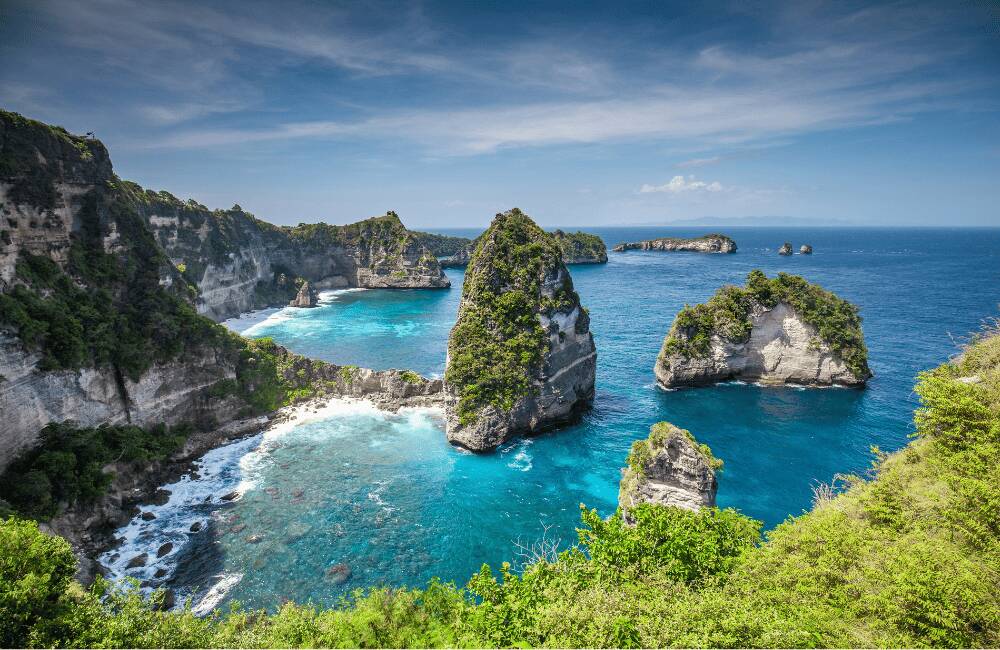
How many days are needed to visit Bali?
Although Bali is not very large, the condition of many of its roads and the traffic, which is often continuous in Ubud and at the tourist spots in the south, make distances feel longer. If you want a broad idea of the island, a recommended minimum would be between 7 and 10 days. If you’re just looking to relax on a beach in the south, you can dedicate less time. In my opinion, for a first impression, combining a seven-day stay in Ubud, including day trips to the north and east, with three days in the south, another three on one of the Gili Islands, and two in Nusa Lembongan can make for a very complete trip. If you want to include other cities like Jakarta or Yogyakarta in your trip, it would be advisable to dedicate about 15 days to your route through Indonesia.
An authentic way to explore Bali and reach corners that would otherwise be impossible to access is by motorbike, although if you lack experience, the best option is to rent a car with a driver.
Complete guide to Bali: What is most famous?
About Bali, we often have the wrong image of paradise beaches with crystal-clear waters, but the true charm of Bali lies in its temples, its culture, and especially its people. Among its temples, Tanah Lot and Uluwatu stand out in the south, and the Mother Temple and Ulun Danu are notable in the north. Some of them offer the opportunity to witness traditional dances that connect visitors with their rich cultural heritage.
Many travelers arrive in Bali in search of wellness and relaxation. Bali has yoga retreats, Ayurvedic medicine centers, and other oases to disconnect from the world and reconnect with inner peace in the midst of jungles and rice fields.
What is the best month to visit Bali?
If you’re wondering what the best time to travel to Bali is, here’s all the information you need:
Bali has a warm and humid tropical climate with an annual average temperature of around 28ºC.
The monsoon season lasts from October to April or May, with intermittent but intense rain showers that are brief and do not hinder visits. However, it can rain in Bali at any time of year, so if you want to travel to the island at a good price and without crowds, these months are the best for it, always avoiding key dates like Christmas and Easter. Additionally, you’ll find the vegetation and rice fields in all their splendor.
On the other hand, the months of June, July, and August tend to be less rainy but also see a higher influx of tourists.
A highly recommended experience in Bali is to participate in one of the numerous festivals celebrated on the island throughout the year. Most are governed by the lunar calendar, and their dates vary each year. Be sure to check the calendar to align your trip with one of them.
Is Bali a safe place?
The Balinese are known for being quite friendly and peaceful, but it’s always wise to consider recommendations for traveling to Indonesia.
In the more touristy areas of the south, petty thefts can occur, or prices for tourist services may significantly increase compared to the north.
It is not advisable for tourists to ride motorcycles unless they are experienced drivers. Accidents of this nature are common. It’s always advisable to travel with comprehensive travel insurance that covers any mishap that may arise during your trip.
How much money do you need for a trip to Bali?
The Indonesian rupiah is used in Bali, although prices are often listed in dollars. One dollar is worth about 15,000 rupiah. Generally, prices are quite affordable, although they can vary depending on where you are on the island. In the north, for example, it’s possible to stay in a luxury hotel for less than $110 a night. Balinese massages of 60 minutes can start at around $9.
When it comes to dining, there is a wide variety of establishments, from international restaurants with American prices to traditional warungs, which are the most economical, where you can enjoy a typical dish of nasi goreng or mie goreng for under $5.
In general, visiting most tourist attractions requires an entrance fee, but the cost is reasonable. Check the updated prices on the official websites.
Tips for organizing a trip to Bali
Get travel insurance. Nothing ever happens, but what if it does? Any unexpected situation that may arise is much easier, cheaper, and safer to handle with travel insurance that covers the incident.
Get your travel insurance for Bali
Be sure to drink bottled water at all times and ask restaurants if the ice is made from filtered water or, better yet, avoid it altogether. In Bali, it’s common to experience what is known as “Bali Belly,” a touristy and amusing term for stomach discomfort.
The predominant religion in Indonesia is Islam, but Bali is governed by Balinese Hinduism, a mix of Hindu practices, Buddhist saints, and animist beliefs. For this reason, the main attractions in Bali are its temples. To avoid long lines, it’s advisable to wake up early so you can enjoy them almost in solitude. Once at the temples, both men and women must cover their legs with a sarong or scarf. It is common for these to be offered for free at the entrance to the temples.
As for documentation and requirements for entering Bali, American travelers will need a passport valid for more than six months. You can obtain a visa upon arrival at the airport for stays of less than 30 days. If the stay will be longer, it must be processed online before departure. For more information, you can check the website of the U.S. Department of State, where you’ll find travel advice and general warnings about visiting Indonesia.
Featured stories

